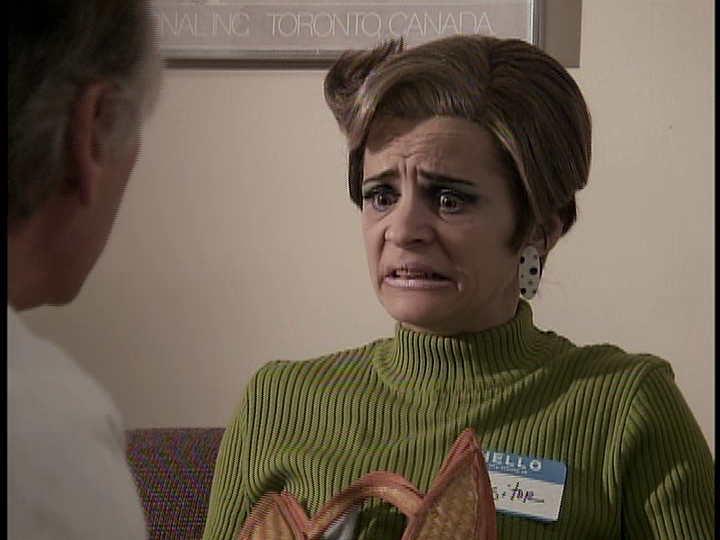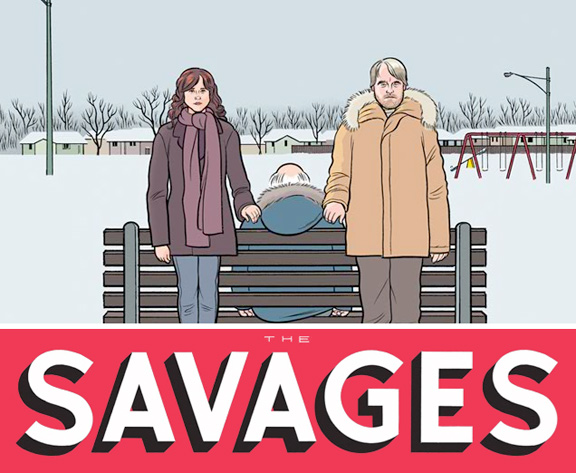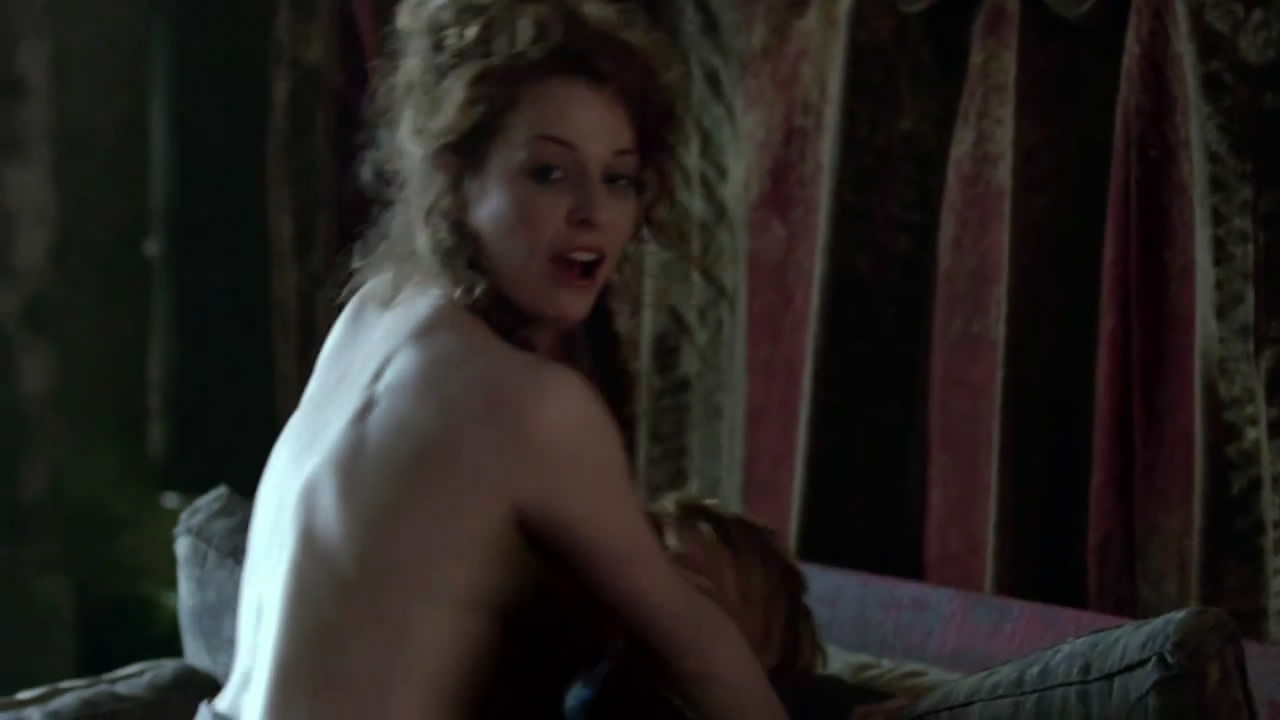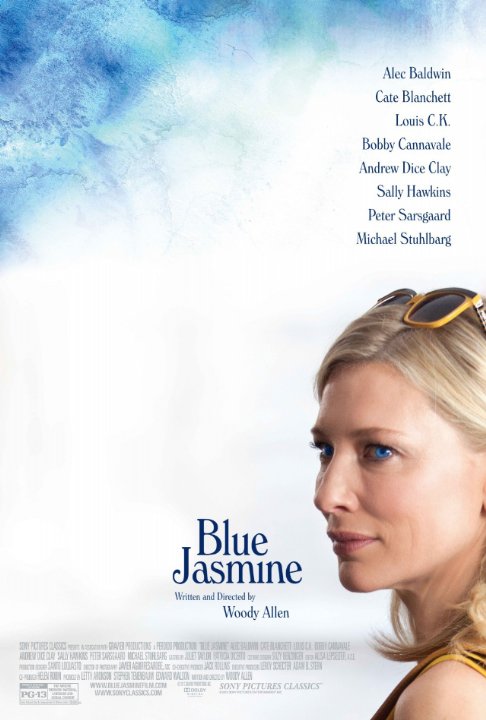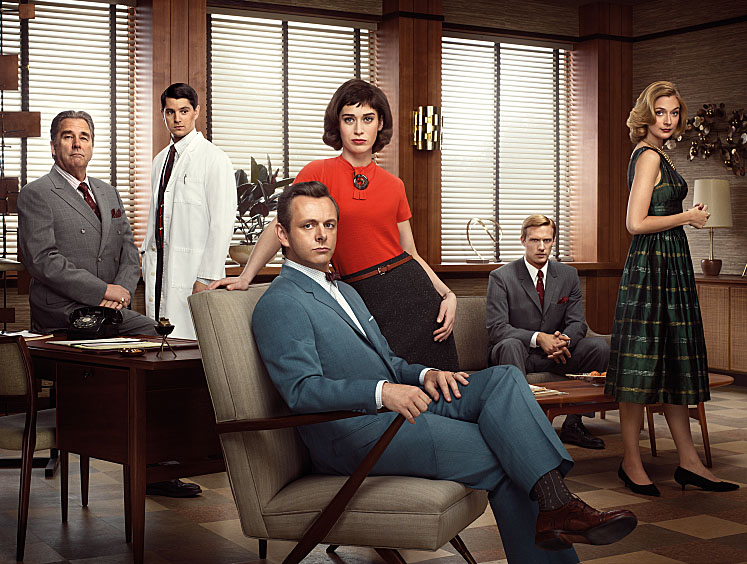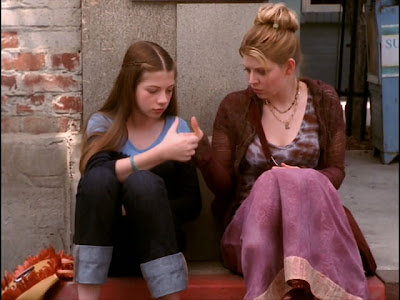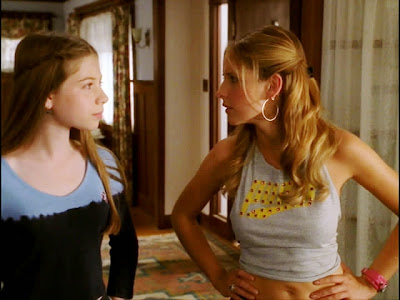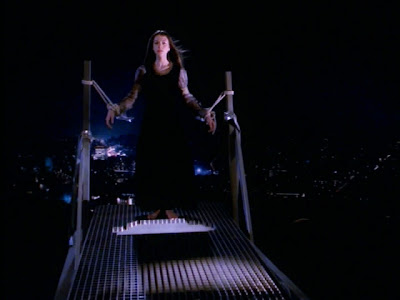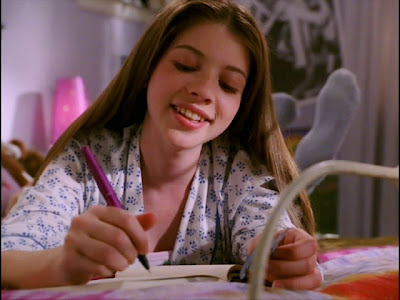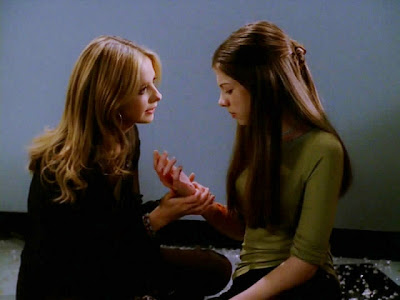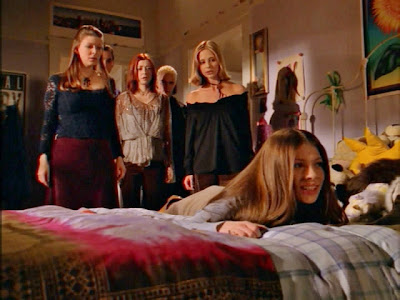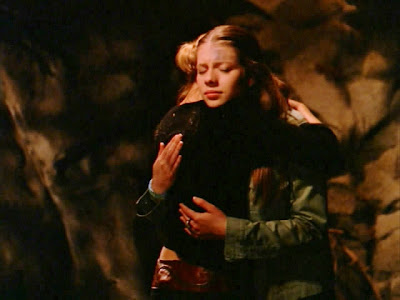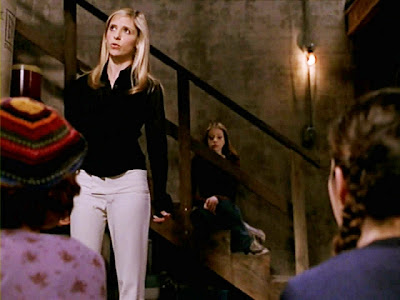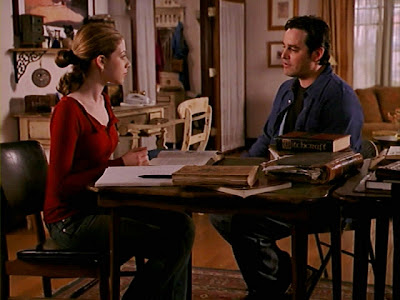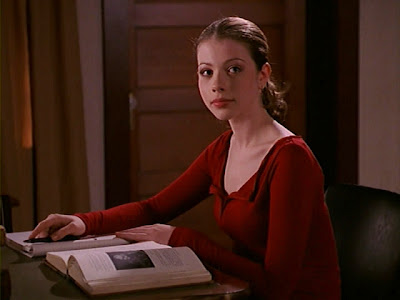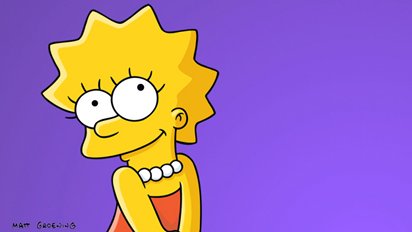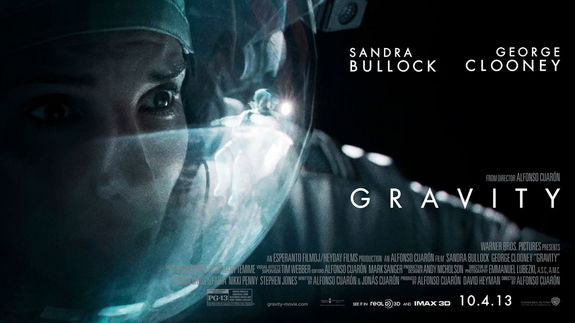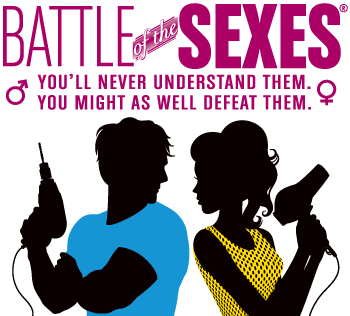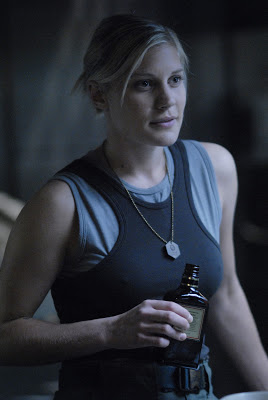Written by Jenny Lapekas.
Strangers with Candy (Peter Lauer, et al., 1999-2000) is one of the most wildly subversive shows I’ve ever seen on television (most subversive shows are canceled before long–see Wonder Showzen (Vernon Chatman and John Lee, 2005-2006, which features segments with David Cross), and it feels like I’ve waited a long time for an opportunity to rave about its hilarious characters and its clever writing. When this delightfully dark show aired on Comedy Central, I was old enough to understand that it appealed to a somewhat alternative audience, yet I was too young to fully comprehend or appreciate the satirical wit and unyielding sense of hopelessness the show conveyed to audiences. Jerri Blank (Amy Sedaris) tirelessly strives for the acceptance of her “peers” in high school, from the snooty cheerleaders and the lusted after jock to the kooky assortment of teachers, which includes Mr. Noblet, played by the wonderful Stephen Colbert, and Jerri’s ironically unsympathetic guidance counselor, Ms. Pines, played by the always funny Janeane Garofalo.

I learned rather recently that Jerri Blank is based on a real person: Florrie Fisher was a motivational speaker in the 60s and 70s who traveled to high schools and discussed her history as a prostitute and heroin addict. The series was inspired by Fisher’s public service announcement “The Trip Back,” allowing the birth of Strangers from a fairly dark origin. The “uglification” of Sedaris as she transforms into the recovering addict, Jerri Blank, is possibly most noticeable to new fans of the show. Those who worked on the show’s costume and aesthetics seemingly left no stone unturned in their attempt to make Sedaris as hideous and repulsive as possible. Jerri is a middle-aged woman who returns to high school with a sordid past of drugs and crime–much of which is left to the imaginations of viewers. With a ridiculously exaggerated overbite, strategically placed padding, and several layers of heavy makeup, Jerri is all teeth, hair and hips. Sedaris has done much in the way of writing, feminism, and DIY projects, and she has even been featured on the cover of Bust magazine.

Any fan of the show who is somewhat cognizant of LGBTQ visibility in television and media studies will undoubtedly pick up on the deeply closeted homosexual relationship between Mr. Noblet (Colbert) and Mr. Jellineck (Paul Dinello–whom Sedaris dated for several years). Chuck Noblet is cold, disconnected and married to a woman he loathes while Geoffrey Jellineck, Flat Point’s caring art teacher, is sensitive, sweet, and vulnerable. Although the pair are desperately in love, Chuck continually disappoints Geoffrey in a variety of twisted and unimaginable ways throughout three seasons of absurdity. Besides his refusal to publicly recognize their love, Chuck flees a romantic picnic planned by his lover as Geoffrey is hit by a car, rendering him a faceless monster for the majority of the episode. What we take away from this stagnant relationship is a model for the most dysfunctional gay romance I’ve encountered in a comedy series.

After exploring all her riveting career options upon graduation, Jerri tells us, “If you’re gonna reach for a star, reach for the lowest one you can.” Jerri lacks the support of her family; her flippant mother would gladly throw her middle-aged daughter under a bus, and Jerri’s closeted brother Derrick is fueled by teen angst and the desire to somehow disparage a woman who has already been defeated a thousand times over by life’s difficulties. Like most protagonists of TV dramas, Jerri is supposed to learn a significant life lesson at the end of each episode, yet the obvious message is forever lost on Jerri. In a two-part episode entitled “Blank Stare,” Jerri joins a cult that has infiltrated Flat Point. After Jerri’s teachers and principal rescue her from the brainwashed gang who are lodging at “Safe Trap House,” they force the 46-year-old high school student to look into a mirror and admit that the cult is merely a group of liars because they’ve told Jerri that she’s beautiful. Furthermore, I don’t think Strangers fans actually want Jerri to evolve and become a better person, because then she simply wouldn’t be Jerri Blank anymore.

What’s difficult to admit about Sedaris’s character is that Jerri is truly a bad person; she hurts animals, she demonstrates the pinnacle of racist and sexist ideologies and behaviors, and she has clear predatory tendencies toward the high school girls we encounter throughout the show’s run. Jerri is obviously bisexual, and the aggressive fashion in which she proves this to us may cause more conventional viewers some discomfort. In short, Jerri violates gender roles. Sitting outside of Principal Blackman’s (Greg Hollimon) office, Jerri asks a pretty redhead, “Hey Red, carpet match the drapes?” Due to her ability to play a genuinely likable character with such transgressive traits, Sedaris is an important figure for the evolution of women and comedy; we root for Jerri even as we’re hoping she falls. Fans of the show may find themselves disliking her racist behavior, such as calling her best friend Orlando, a sweet Filipino boy, a “monkey,” while also finding that this behavior works for the character and situates her as a feminist anti-hero on Comedy Central. Sedaris successfully satirizes the traumatic high school experience–cliques, bullying, and tough teachers–and de-stigmatizes the negative “sexually aggressive woman” archetype while boasting an identity that has been socially constructed around sex, drugs and alcohol. While Jerri expects us to believe that she’s better for experiencing this depressing lifestyle and then recovering from it, the show’s writers trust us to believe that Jerry is actually a static character throughout Strangers with Candy. How, then, can a television show maintain viewership when a character fails to learn or grow? Simple: we tune in to Strangers to discover the new and twisted ways in which Jerri will fail, sink, and back-pedal; Jerri’s failures are her triumphs. This observation then points up the question: Are we sadists for watching this show? No, because I think we recognize our own flaws in the caricature nature of Jerri, and we find comfort in the onscreen marriage of these flaws and the hilarity of brilliant writing and acting talents like Amy Sedaris, Stephen Colbert, and Paul Dinello.
Recommended reading: Baking Amy, Tony’s “Strangers With Candy” Companion
_________________________________________
Jenny has a Master of Arts degree in English, and she is a part-time instructor at Alvernia University. Her areas of scholarship include women’s literature, menstrual literacy, and rape-revenge cinema. You can find her on Pinterest and WordPress.
